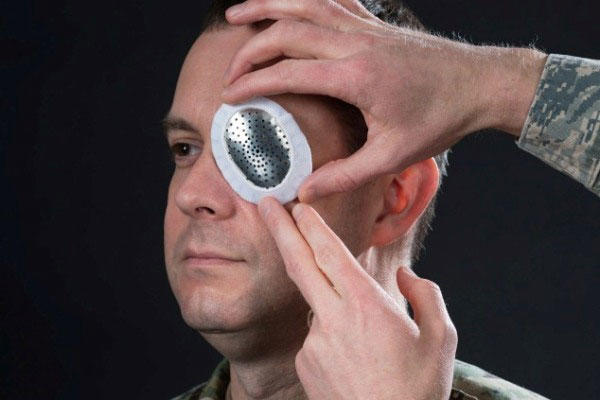The Veterans Affairs Department is finally compiling a list of eye-injured veterans, something it has failed to do in the four years since Congress mandated the registry when it created the Vision Center of Excellence.
But the VA's registry will not be linked to one already set up by the Defense Department, according to Tom Zampieri, a district director for the Blinded Veterans Association.
"The VA is hiring its own contractors and will work the next nine months to develop its own registry," Zampieri said. "So instead of a compilation of [DoD and VA] records there will two registries."
The association favors a single registry, which is what Congress mandated when it created the Vision Center of Excellence.
The VA has not responded to Military.com's request for comment.
Zampieri said he is hoping that the new secretary will focus greater attention on the Vision Center of Excellence than his predecessor.
During Secretary Erik Shinseki's time at VA, the vision center was largely ignored. It never received funding to hire a full staff and the VA made no real effort to compile a registry of eye-injured veterans.
In testimony, Under Secretary for Health Dr. Robert Petzel avoided in answering specific questions about the center, telling Congress in 2013 that he was not aware center jobs were unfilled and claimed the registry was under development.
Petzel turned in his resignation ahead of a planned retirement in May amidst a scandal involving secret wait lists and patient deaths.
Zampieri said the center was always under staffed and the registry included only one name.
VA Secretary Robert McDonald spoke Tuesday in Sparks, Nevada. Though McDonald did not address issues specific to blind or vision-impaired veteran during his speech, Zampieri said the association is hopeful the new secretary will take a closer look at its concerns.
One plus, he believes, is that the former head of the Vision Center of Excellence, retired Army Col. Donald Gagliano, was a classmate of McDonald's at West Point, as was Deputy VA Secretary Sloan Gibson, who filled in as acting VA chief after Shinseki resigned in May.
Gagliano, now an assistant clinical professor at the Uniformed Services University and a specialist at Walter Reed, was among the attendees who got a shout out from McDonald during the speech. Also at the speech was Dr. Mary Lawrence, deputy executive director of the Vision Center of Excellence, who McDonald also mentioned by name, saying he looked "forward forward to working with you and your colleagues."
As he has been doing at other VA facilities, McDonald conceded that the VA has a way to go following the wait-list scandal and other problems with regaining the trust of veterans and the public. He reiterated that anyone who deliberately skewed the appointments system would be held accountable.
At least 35 deaths have been linked to manipulated patient appointments and VA leadership has said officials could face criminal charges.
Zampieri said McDonald "spent a lot of time talking to a group of Iraq and Afghanistan veterans" during the visit, and that the new secretary was impressive.
Zampieri called the VA's decision to go with separate registries "a microcosm of the bigger problem" between VA and DoD. The decision recalls the decision by the two departments to abandon a program to develop a single electronic health records system.
In February 2013, only days after announcing they would speed up the program – for which more than $1 billion had reportedly been spent – then-Defense Secretary Leon Panetta announced they would, instead, stay with their own systems but work to integrate them.
The move frustrated and confused Congress, with some lawmakers particularly reluctant to hear VA come forward with any new IT budget request.
Panetta announced the decision after a meeting with Shinseki, and some observers believe that it was the Pentagon that wanted out of the program.
In the case of the Vision Center of Excellence, it is the VA that has dragged its feet. In contrast to the VA eye-injured registry, bearing only a single name, the DoD has built a working registry of about 30,000 names, according to Zampieri.
-- Bryant Jordan can be reached at bryant.jordan@monster.com


























